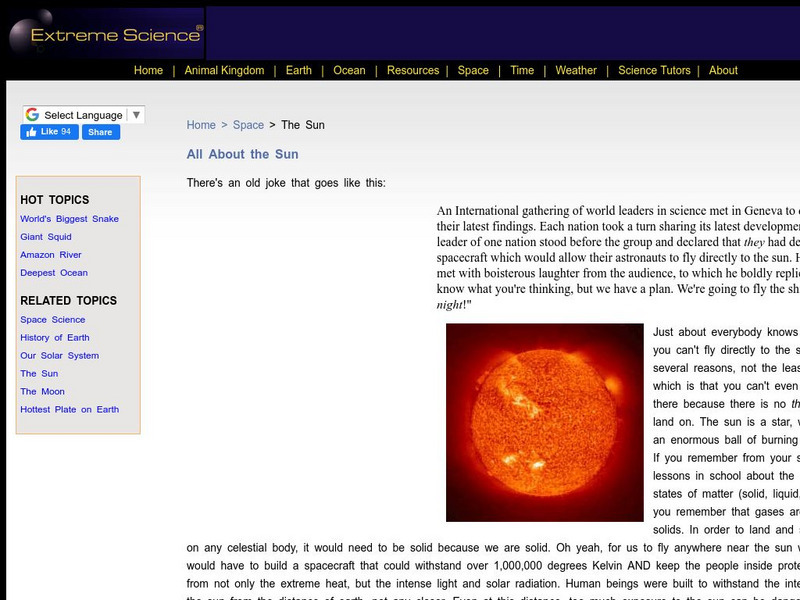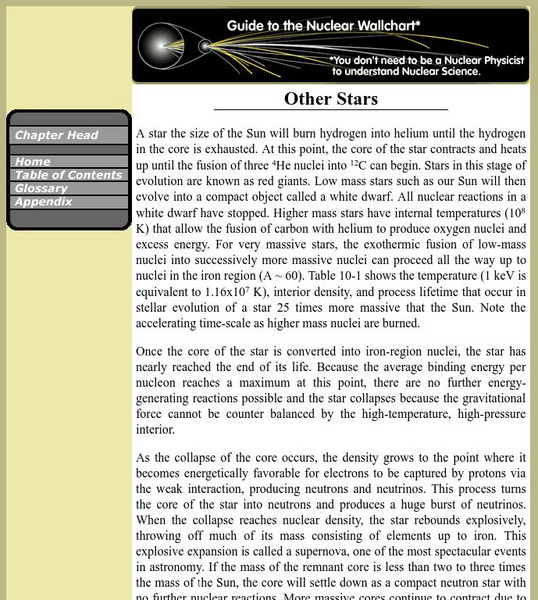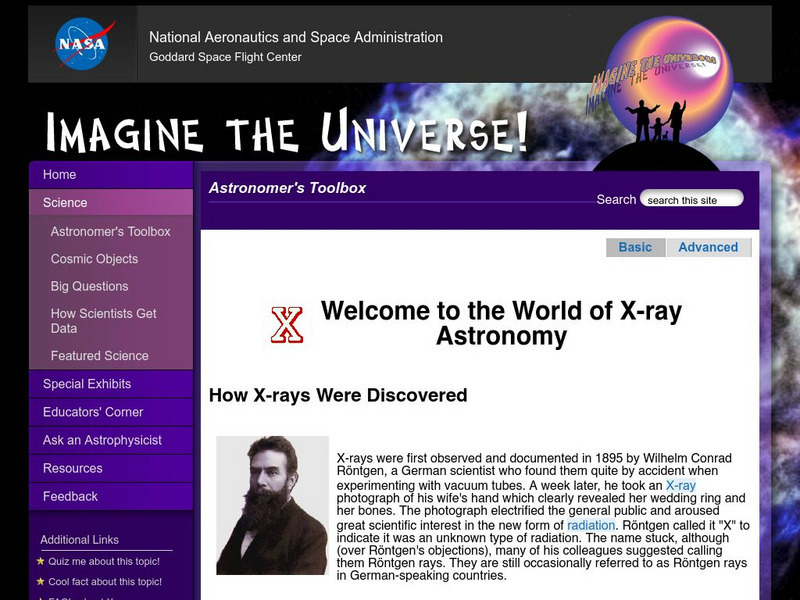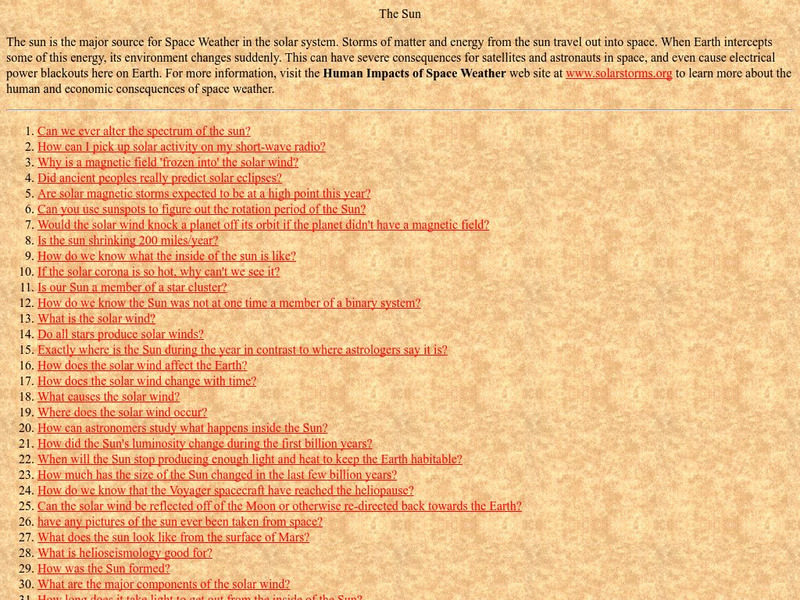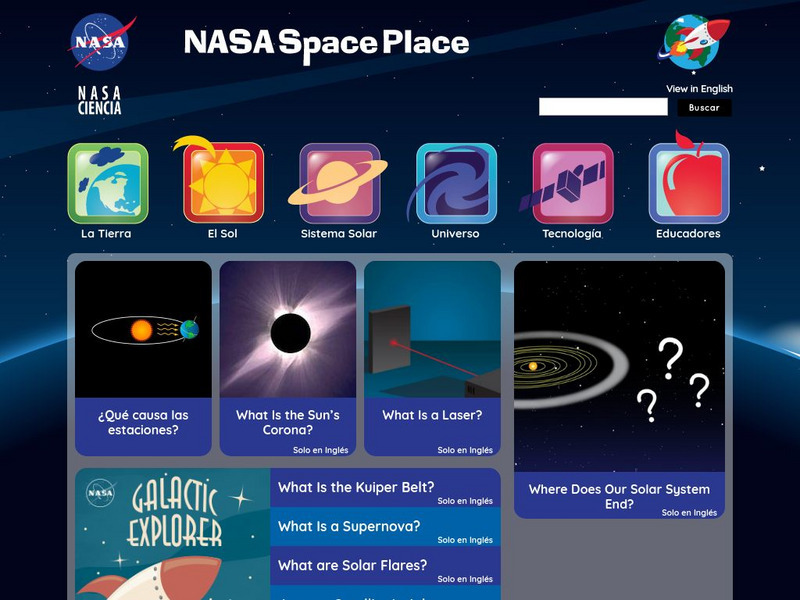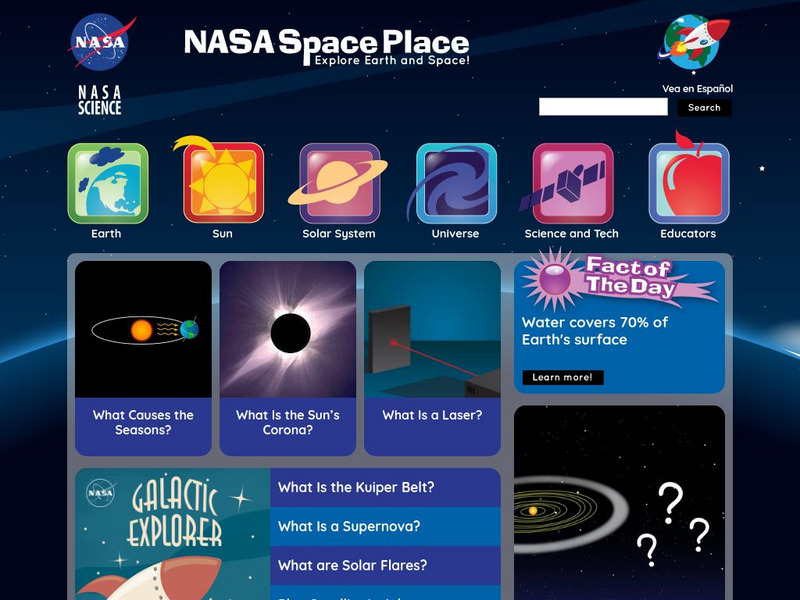Hi, what do you want to do?
Nine Planets
The Nine Planets: Sun Picture List
Various pictures and movies of the sun. Download some of these files and then give a presentation to your class explaining the solar phenomena.
Extreme Science
Extreme Science: All About the Sun
Read about the sun, the source of its energy, solar activity, sunrise/sunset times, solar flares, and other interesting facts.
NASA
Nasa Space Place: Sun
Test your knowledge about the sun with games and activities designed to help explore what you know.
Mocomi & Anibrain Digital Technologies
Mocomi: What Is a Star?
Learn about stars, how they are formed, the biggest and smallest star, what they look like, well-known stars and constellations, and other interesting facts.
Other
Kid Power: Astronomy for Kids
Young children can find facts about the Solar System, the Sun, meteorites, stars, galaxies, planets, our moon, comets, asteroids, and space exploration. Pages offer clear photos and bullet-point information, which is easy to read and...
Other
Hong Kong Space Museum
Besides an introduction to exhibitions and events at the museum, the site provides a guide to stargazing, an astronomy FAQ, space news, virtual tours (see site map) and research resources (including Chinese-English star and constellation...
Lawrence Berkeley National Laboratory
Berkeley Lab: Other Stars
Describes other stars besides the sun in our galaxy and the major stages in the evolution of a massive star.
Other
University of Leicester: The Solar System
Resource explores the solar system, with an in depth discussion of each of the planets and their properties.
Lerner Publishing Group
Lerner Classroom: Teaching Science Through Literacy
In this lesson plan, students will gather evidence to support the argument that differences in the apparent brightness of the sun compared with other stars is due to their relative distances from Earth. Students will also write texts in...
Ministerio de Educación (Spain)
Observaciones Y Modelos en Astronomia
How does the length of the day change? How does the height of the sun change? Do we always see the same star? The answer to these questions and different observations about the sun, the moon and the stars that we can do from earth can be...
Ministerio de Educación (Spain)
Ministerio De Educacion: Una Estrella Llamada Sol Modulo Iv Unidad 1
In this module you will study the structure and composition of the star closest to us: the Sun.
Australian Museum
Australian Museum: The Earth: The Universe
Basic information about the universe, its origin and composition. Also includes information about galaxies, stars, and the sun.
NASA
Nasa: Imagine the Universe: Welcome to the World of X Ray Astronomy
Site recounts how X-rays were discovered as well as who discovered them. Offers graphics, links to facts on this topic, a quiz, and teacher resources.
Harvard University
Eyes on the Sky, Feet on the Ground: The Earth's Rotation
Plenty of cool activities about the Earth's rotation can be found here, such as tracing shadows, observing shadows during different times of the day, and tracking the sun's path in the sky to understand the rotation of the earth.
Ministerio de Educación (Spain)
Ministerio De Educacion: Astronomia Para Ninas Y Ninos
Learn basic astronomy and travel through space. After you finish the lessons you can take the evaluation to obtain the clues needed to play the fun space games.
Scholastic
Scholastic: Study Jams! Science: Our Solar System: The Universe
A video and a short multiple-choice quiz on the Universe and what it is made up of.
NC State University
Adventures of the Agronauts
Come along with the Agronauts and discover space in order to report back to Commander Spud Goodroot. Fun site provides all types of information about space science! Various missions include: 'What's In Our Sky?', 'The Root of the...
Other
Canal Kids: Ciencias (Science for Portuguese Speakers)
Colorful, engagingly written information about astronomy and biology for Portuguese-speaking English language learners. Both subjects are broken down into a broad array of related subtopics. The biology section is particularly helpful...
NASA
Nasa: Image Science Center: Ask the Space Scientist
A NASA space scientist provides 98 questions and answers about the sun, the center of our solar system.
National Endowment for the Humanities
Neh: Edsit Ement: Sounds of the Sonnet
"Sound Experiments" drive this lesson plan. Sonnet analysis is accompanied by readings based on specific emotions. At this website, there are several links full-text sonnets by such authors as Shakespeare, Lord Byron, Longfellow, and...
NASA
Nasa Space Place: El Space Place
NASA's space science site for kids - en Espanol. Features a wide range of activities, including games, projects, animations, and more. Also contains useful information on basic physics, chemistry, and other natural sciences, offering...
BBC
Bb Ci Space: Solar System
Take a journey through the solar system with this interactive guide. Includes planetary history, "travel information," "tourist highlights," and video clips. Games and quizzes include a Solar System jigsaw that prompts the student to...
NASA
Nasa Star Child: The Sun
A site for users to learn more about the Sun. Site includes a song, movie and facts about the Sun.
NASA
Nasa: The Space Place
This site from NASA's Space Place is geared towards early elementary learners. It offers detailed instructions for crafts and activities related to space, games and a teacher resource area. Students can also ask an expert at this site.
Other popular searches
- Sun and Stars Diagram
- The Sun and Stars
- Moon, Sun and Stars
- Sun and Stars Powerpoint
- Moon Sun and Stars
- Sun and Stars Webquest
- Sun and Stars Web Quest
- Stars and Sun
- Sun Moon and Stars Activity






